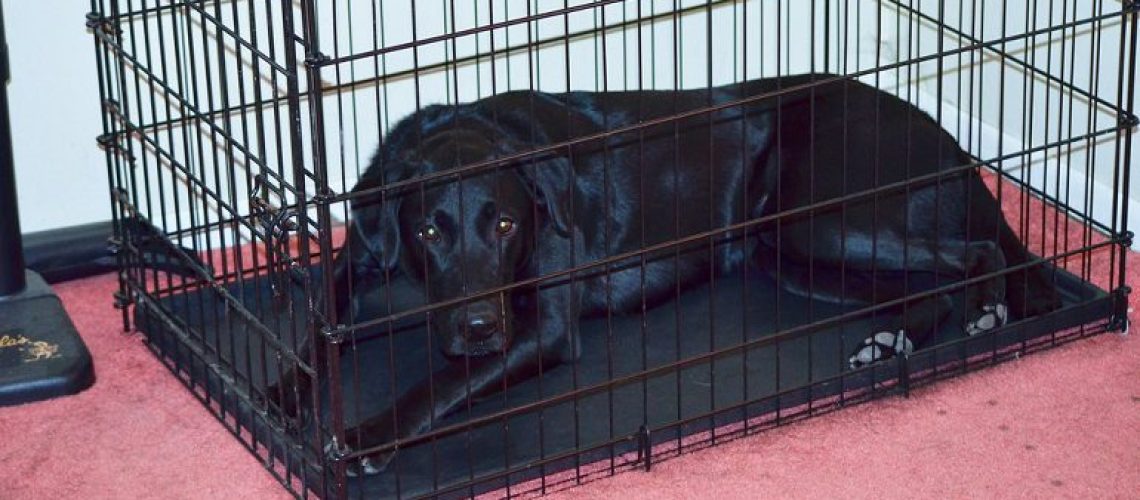Welcome to our comprehensive guide on buying, setting up, and collapsing a dog crate. Whether you're a new pet owner or looking to upgrade your current crate, this guide will provide you with all the essential information you need to make an informed decision. From choosing the right size and type of crate to easy setup and hassle-free collapsing techniques, we've got you covered. Let's dive in and make crate training a breeze for you and your furry friend!
Key Takeaways:
-
1. Choose the right size: Ensure that the dog crate is appropriate for your dog's size and breed to provide comfort and prevent any potential injury.
2. Consider material and durability: Select a crate made of sturdy materials like metal or heavy-duty plastic to ensure it can withstand your dog's behavior and last for a long time.
3. Properly set up the crate: Follow the manufacturer's instructions to assemble the crate correctly, ensuring it is secure and safe for your dog to use.
4. Introduce crate training gradually: Help your dog associate positive experiences with the crate by introducing it slowly, using treats or toys, and gradually increasing the duration of time spent inside.
5. Collapse and store properly: When not in use, collapse the crate according to instructions and store it in a suitable location to maintain its condition and maximize space efficiency.
What is a dog crate and why should you get one?
A dog crate is a specially designed enclosed space that provides a safe and secure area for your furry friend. It is usually made of metal, plastic, or fabric and has a door that can be opened or closed. Dog crates come in various sizes to accommodate different breeds and sizes of dogs.
There are several reasons why you might consider getting a dog crate for your pet. Firstly, it can serve as a cozy den-like space where your dog can retreat to when they need some alone time or want to relax. Dogs are den animals by nature, so having their own designated space can make them feel more secure and comfortable.
Secondly, a dog crate can aid in house training your pet. Dogs have an instinctual desire to keep their sleeping area clean, so if they are confined to their crate when unsupervised, they are less likely to have accidents in the house. This helps establish good bathroom habits and speeds up the house training process.
Additionally, a dog crate can be useful for travel purposes. Whether you're going on a road trip or flying with your pet, having a familiar and secure space like a crate can help reduce stress and anxiety for both you and your furry companion.
Choosing the right size dog crate: A beginner's guide
When it comes to choosing the right size dog crate, it's important to consider your pet's current size as well as their potential growth. A crate that is too small will be uncomfortable for your dog, while one that is too large may not provide the sense of security that dogs seek in their den-like spaces.
To determine the appropriate size, measure your dog from nose to tail base while they are standing up. Add a few inches to this measurement to ensure your dog has enough room to move around comfortably. It's also essential to consider your dog's height and weight when selecting a crate.
If you have a puppy, you can opt for an adjustable crate that can be resized as they grow. This way, you won't have to invest in multiple crates as your puppy reaches adulthood. However, make sure the crate includes dividers or inserts to create a smaller space within the larger crate while your puppy is still small.
Keep in mind that different breeds have different space requirements. For example, smaller breeds like Chihuahuas may feel more secure in a smaller-sized crate, while larger breeds like Golden Retrievers may need extra room to stretch out comfortably. Consulting breed-specific size guidelines can be helpful in determining the appropriate crate size for your dog.
Important features to consider when buying a dog crate
When purchasing a dog crate, there are several important features to consider that will ensure the comfort and safety of your furry friend. Firstly, it is crucial to choose the right size crate for your dog. The crate should be large enough for your dog to stand up, turn around, and lie down comfortably. Additionally, consider the material of the crate. Metal crates are durable and provide good ventilation, while plastic crates offer more privacy and can be easier to clean. Another important feature to look for is a secure locking mechanism on the door of the crate to prevent any accidental escapes.
Size:
Choosing the correct size crate is essential for your dog's comfort. Measure your dog from nose to tail and add a few inches to determine the appropriate length of the crate. The height of the crate should allow your dog to stand up without their head touching the top.
Material:
Consider the material of the crate based on your dog's needs and preferences. Metal crates are sturdy and provide good airflow, making them suitable for dogs who tend to overheat easily. Plastic crates offer more privacy and can create a den-like environment that some dogs find comforting.
Locking Mechanism:
Ensure that the crate you choose has a secure locking mechanism on its door. This will prevent any accidental escapes or unauthorized access by other animals or children.
Setting up a comfortable space: How to prepare your dog's crate
Creating a comfortable space within your dog's crate is essential for their well-being and overall happiness. Start by lining the bottom of the crate with a soft bedding material such as blankets or towels. This will provide cushioning and insulation against cold surfaces. It is important to regularly wash these bedding materials to maintain cleanliness.
Bedding Material:
Choose bedding materials that are easy to clean and maintain. Avoid using materials that can be easily chewed or ingested by your dog, such as shredded paper or straw.
Temperature Control:
Consider the temperature of the area where the crate is placed. If it tends to get cold, you may want to add a cozy blanket or a heat pad to keep your dog warm. Conversely, if it gets hot, ensure proper ventilation and avoid direct sunlight on the crate.
Making your dog's crate feel like home: Tips for added comfort
To make your dog's crate feel like a safe and comfortable haven, there are several tips you can follow. Firstly, introduce familiar scents by placing an item with your scent in the crate. This could be a t-shirt or a blanket that carries your scent. Additionally, consider adding some toys or chew treats to keep your dog entertained while they are in their crate.
Familiar Scents:
Introducing familiar scents can help reduce anxiety and make your dog feel more at ease in their crate. Your scent will provide them with a sense of security and familiarity.
Toys and Chew Treats:
Providing toys or chew treats inside the crate can help keep your dog occupied and prevent boredom. Choose toys that are safe for unsupervised play and avoid any small parts that could be swallowed.
Training your furry friend: Helping them feel safe in their new crate
Proper training is essential to help your furry friend feel safe and comfortable in their new crate. Start by introducing the crate gradually, allowing them to explore it at their own pace. Use positive reinforcement techniques such as treats or praise when they enter the crate willingly. Gradually increase the duration of time they spend in the crate until they become accustomed to it.
Introduction:
Introduce the crate slowly and positively. Leave the door open and allow your dog to explore it freely. Encourage them with treats or praise when they show interest in the crate.
Positive Reinforcement:
Use positive reinforcement techniques to encourage your dog to enter the crate willingly. Reward them with treats or praise when they go inside the crate voluntarily.
Gradual Increase in Time:
Start by leaving your dog in the crate for short periods of time, gradually increasing the duration as they become more comfortable. This will help prevent any feelings of confinement or anxiety.
Safety first: Precautions when using a dog crate
While a dog crate can provide a safe space for your furry friend, it is important to take certain precautions to ensure their well-being. Never leave your dog unattended for long periods of time in their crate, as this can lead to boredom and anxiety. Additionally, avoid using the crate as a form of punishment, as this can create negative associations with it.
Supervision:
Always supervise your dog when they are in their crate, especially during the initial stages of training. This will allow you to address any signs of distress or discomfort promptly.
Avoid Using Crate as Punishment:
Using the crate as a form of punishment can create negative associations and make your dog reluctant to enter it willingly. Instead, focus on positive reinforcement techniques during training.
Collapsing or folding a dog crate: Easy steps for storage or transport
Collapsing or folding a dog crate is essential for easy storage or transport. Follow these simple steps to ensure a hassle-free process:
1. Remove any bedding materials or accessories from inside the crate.
2. Locate the latches or locks that secure the sides of the crate together.
3. Release the latches or locks and gently collapse the sides of the crate towards the center.
4. Fold down any additional panels, such as the top or bottom, if applicable.
5. Secure the collapsed crate with any provided straps or clips to keep it compact and prevent it from unfolding during storage or transport.
Alternative uses for collapsed dog crates: Thinking outside the box
Collapsed dog crates can have various alternative uses beyond their traditional purpose. Here are a few creative ideas:
- Pet Playpen: Use the collapsed crate as a temporary pet playpen by expanding it in an open area and securing it with additional panels or fencing.
- Storage Organizer: Repurpose the collapsed crate as a storage organizer for your pet's toys, accessories, or even household items.
- Outdoor Barrier: Utilize the crate as an outdoor barrier to section off certain areas of your yard or garden temporarily.
Remember to ensure that any alternative use is safe and suitable for your specific needs before repurposing a collapsed dog crate.
| In Summary | |
| Step | Action |
| 1 | Research different dog crate options based on your pet's size and needs. |
| 2 | Purchase a high-quality dog crate that provides comfort and security. |
| 3 | Set up the crate in a quiet, comfortable area of your home, making it inviting for your dog. |
4
More Reads
Dr. Clara Bennett
Hello, fellow pet enthusiasts! I'm Dr. Clara Bennett, your go-to expert on all things pets. With a background in veterinary medicine and a passion for nutrition, I've spent years diving deep into the world of cats, dogs, birds, horses, and the products that keep them thriving. From the English countryside, I've witnessed the magic of animals and am here to share my knowledge, ensuring your pets receive the best care. Together, let's master the art of pet care!
All Posts »
Next Steps In Mastering Cat CareNext Steps In Mastering Dog CareJoin Our NewsletterSubscribe to receive our latest updates in your inbox! | |
















